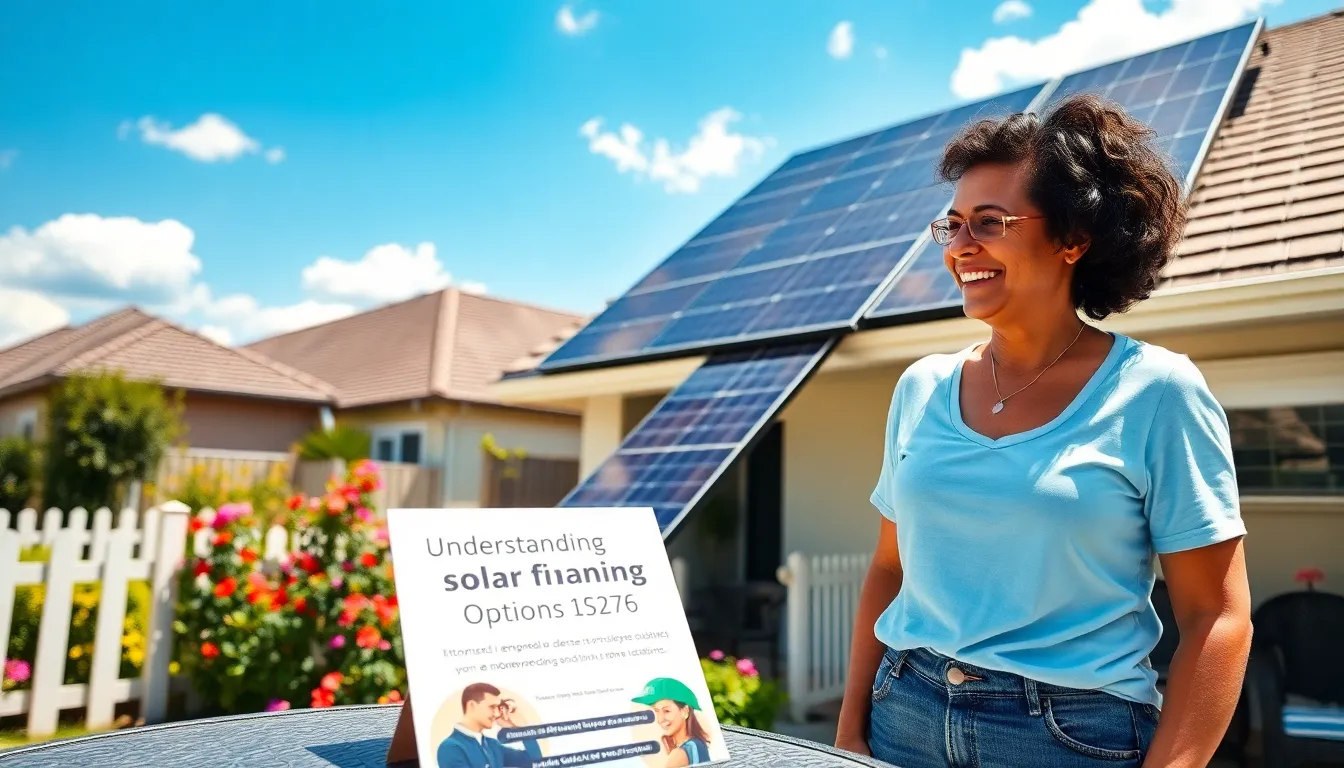In today’s world, solar energy is emerging as a powerful alternative to traditional energy sources, contributing to sustainability and cost savings for homeowners. But, the shift to solar power often comes with financial considerations that can seem daunting. This article explores the essential components of solar financing, offering insights into various options, government incentives, and case studies that equip homeowners with the knowledge they need to make informed decisions. Whether you’re contemplating your first solar investment or seeking to optimize your current setup, understanding these financial pathways is crucial for maximizing your solar energy experience.
Table of Contents
ToggleUnderstanding Solar Financing Options

Financing a solar power system can be a complex journey, but with the right information, homeowners can navigate it successfully. There are several financing options available, each with its own benefits and considerations.
Types Of Solar Financing
There are three primary types of solar financing that homeowners typically choose from: cash purchases, solar loans, and leases.
- Cash Purchase: Paying for a solar system in full upfront is the most straightforward option. Homeowners will own the system outright, which allows them to reap all the financial benefits, including tax credits and solar incentives.
- Loans: Solar loans enable homeowners to finance their systems over time, with monthly payments made until the loan is repaid. This option often requires little to no money down, making it accessible for many.
- Leases: With a solar lease, homeowners essentially rent the solar equipment from a third-party provider for a fixed term. This setup usually includes maintenance and monitoring services, which can simplify the transition to solar.
Government Incentives and Rebates
The financial landscape for solar energy is also enhanced by various government incentives and rebates. In the U.S., the federal government offers a solar investment tax credit (ITC) allowing homeowners to deduct a significant percentage of the cost of solar installation from their federal taxes. Many states and local utility companies also offer rebates or performance-based incentives to encourage solar adoption. Homeowners should research and understand the specific incentives available in their area to maximize their financial savings.
Choosing The Right Financing Model
Selecting the right financing model is a critical step in realizing the benefits of solar energy. Each financing method comes with distinct implications for ownership, responsibility, and savings.
Loan vs. Lease: Which Is Better?
Determining whether to opt for a loan or a lease depends largely on individual financial circumstances and long-term goals.
- Loans typically provide greater financial benefits in the long run, as homeowners build equity over time and can take advantage of tax credits.
- Leases, while initially more affordable with predictable payments, can limit the homeowner’s long-term financial gains, making them less ideal for those committed to solar investment.
PPA (Power Purchase Agreement) Explained
A Power Purchase Agreement (PPA) is another financing option where a third-party company installs a solar system on a homeowner’s property, and in return, the homeowner agrees to purchase the electricity generated at a fixed rate. This option requires no upfront cost and allows homeowners to benefit from solar without the burden of ownership. PPAs can offer lower electricity rates than traditional utilities, though the overall savings may be less than that achieved through direct ownership.
The Importance Of Energy Efficiency
Before investing in solar energy, it’s essential to assess how energy efficiency can significantly impact overall savings.
Assessing Your Energy Needs Before Going Solar
Homeowners should evaluate their current energy consumption to understand how much power their solar system will need to generate. This assessment may include conducting an energy audit, which identifies high-energy appliances or inefficiencies in the home. By knowing which aspects of their energy use can be optimized, homeowners may be able to downsize their solar investments, so reducing costs.
How Energy Efficiency Impacts Solar Savings
When homes incorporate energy-efficient upgrades before installing solar, they often reduce their energy demands, leading to lower solar system sizes and costs. For example, replacing old appliances with energy-efficient models, sealing drafts, and upgrading insulation can enhance energy conservation. This not only leads to smaller, less expensive systems but also maximizes savings on electricity bills.
Real-Life Case Studies
Examining real-life stories can provide valuable lessons about the solar financing process and the benefits thereof.
Successful Solar Financing Stories
One prominent example is a family in California who opted for a solar loan to finance a solar panel installation. With an energy audit, they discovered opportunities for efficiency improvements that lowered their overall solar investment. As a result, they achieved energy independence and reduced their utility bills by over 70%.
Another case involved a homeowner in New York who chose a Power Purchase Agreement. By utilizing a PPA, they enjoyed immediate energy savings without upfront costs, later transitioning to a loan for system ownership, maximizing their long-term benefits.
Lessons Learned From Past Projects
The experiences shared by homeowners reveal critical lessons about conducting comprehensive research and understanding financial implications upfront. Many have noted the importance of reading the fine print in contracts and staying informed about potential changes in government incentives that may affect their financial planning.
Conclusion
Understanding the various financing options available for solar energy is paramount for homeowners looking to make informed decisions about their energy future. By evaluating types of financing, government incentives, and considering energy efficiency, homeowners can maximize their investments in solar energy. Real-life case studies further illuminate the practicalities of different financing routes, aiding in the choice between loans, leases, and PPAs. The path to solar energy does not have to be daunting: with the right knowledge, anyone can harness the power of the sun effectively and affordably.





